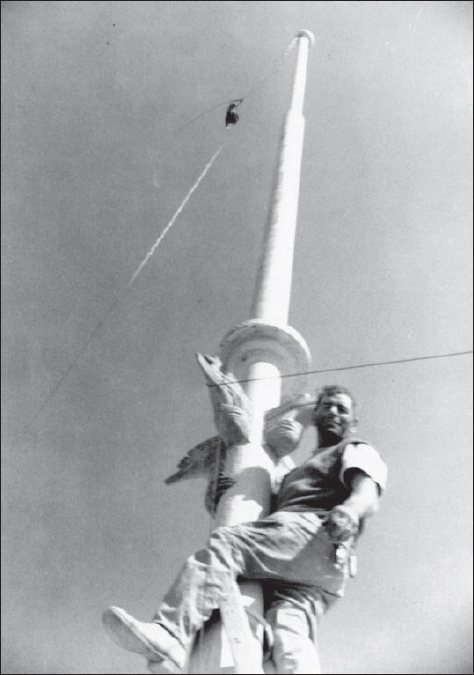
‘Do you know what we call your general?’ a senior Australian officer asked one of O’Connor’s staff officers. ‘The little terrier, because he never lets go.’ At the Rifle Brigade’s Regimental Headquarters near the knocked-out Italian tank, with a mess tent that seemed to Dorman-Smith like ‘a collapsed elephant’, a party was in progress. Smashed lorries, bodies, abandoned piles of equipment, guns and tanks lay in a formless jumble of litter. Over 25,000 prisoners, 216 guns, 1,500 wheeled vehicles and over 100 tanks (enough of which were serviceable to re-equip 6 RTR) were captured in this battle which cost just 25 British casualties. That brought the total haul for the campaign to an astonishing 130,000 prisoners (later put at 110,000) including 22 generals, an admiral and the official Italian Army brothel, 180 medium and 200 light tanks, innumerable soft-skin vehicles and 845 guns captured at a cost of 500 dead, 1,373 wounded and 55 missing. Compass said Wavell, ‘could not have been executed without the magnificent support given by the Royal Air Force and Royal Navy’. Italian records show they lost 58 aircraft in combat (during the Compass period), 91 captured intact on their airfields and no less than 1,100 damaged and captured. RAF losses for the same period (all causes) were 6 Hurricanes, 5 Gladiators, 3 Wellingtons and 1 Valentia.

Some of the 25,000 prisoners taken at Tobruk are marched away. It was a difficult task to look after them in the aftermath of the battle, but the 2/7th and then 2/2nd Bns strove unceasingly to feed and water them, encouraging them to sing to keep up their morale and sometimes singing back.(AWM - 00595)

Among the prisoners were some 1,500 naval personnel, including their admiral, Massimiliano Vietina, whom the Aussies found standing on the steps of the naval barracks immaculately attired complete with white gloves. With his Fiat idling nearby, he smoked a cigar as his men - bags already packed - were marched off into captivity. Meanwhile, in place of the Italian flag which had flown from the tall staff nearby, an Aussie hoisted his own battered slouch hat. (AWM - 005415)
O’Connor was all for finishing the job and keen to proceed. He was sure he could take Tripoli and clear the Italians from North Africa altogether, despite the battered condition of his equipment and tiredness of his men. However, the success of the operation so far merely meant one less thing for Wavell to worry about. When Dorman-Smith went to see him to present O’Connor’s plans in Cairo on 12 February, the maps of the desert that had dominated the long wall were replaced by those of Greece. ‘You see, Eric,’ said Wavell, gesturing towards it, ‘I’m planning my spring campaign.’ Despite achieving what appeared to Churchill as a small miracle, the order to go on the defensive were issued the same day. The day before, Wavell had received instructions from the Defence Committee to send an expeditionary force to Greece before the Germans invaded. Although this was reconsidered and confirmed with Wavell’s support two weeks later, the brief opportunity had passed.
Many of the units from Cyrenaica, including 6 Aus Div, were to find themselves sent to Greece where they were in turn routed in the German invasion a few weeks later. It would be a long time before the British would get another sniff of Tripoli because on the same day they were ordered to halt, there arrived in Libya another fox - Erwin Rommel, soon to be followed by the first elements of the Deutsches Afrikakorps.